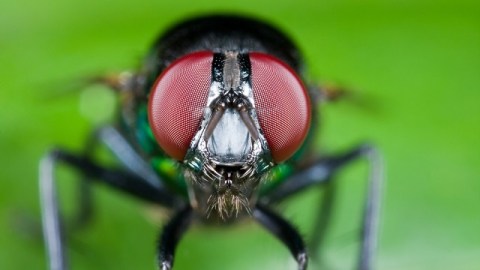A Digital Camera That Works Like An Insect’s Eye

What’s the Latest Development?
Researchers at the University of Illinois have built a digital camera that uses the configuration of insects’ compound eyes as its inspiration. The camera consists of 180 artificial imaging units — called ommatidia in the insect world — each of which sends light to an individual photodetector. These units were put together into flat arrays, which were then shaped into a hemisphere closely resembling an actual insect eye. The resulting camera has a 160-degree field of view. The research appears in the latest online issue of Nature.
What’s the Big Idea?
Insects’ vision is far superior to humans’ in several areas, including motion sensitivity and depth perception. The 180 ommatidia in the researchers’ design puts their camera on the same scale as fire ants’ eyes. What makes this design unique compared to past compound eye-based cameras is that it’s scalable to millions of ommatidia, which could mean cameras with vision that would surpass anything in the insect world, and could be used in areas ranging from surveillance to medicine. Although, according to lead researcher John Rogers, “it’s hard to figure out what an ant sees,” tests suggest that the camera comes pretty close to duplicating what “evolution has determined [as] a very powerful capability.”
Photo Credit: Shutterstock.com





